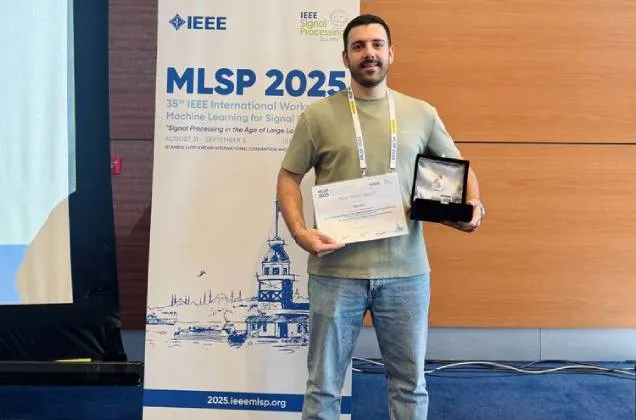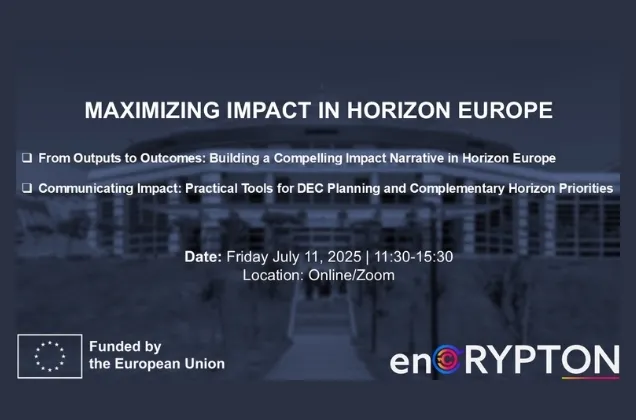25/11/2013
‘Graphene’ and ‘Human Brain’ Flagships, two of the world’s most ambitions projects, have been officially launched. Sabancı University will implement these projects in Turkey.
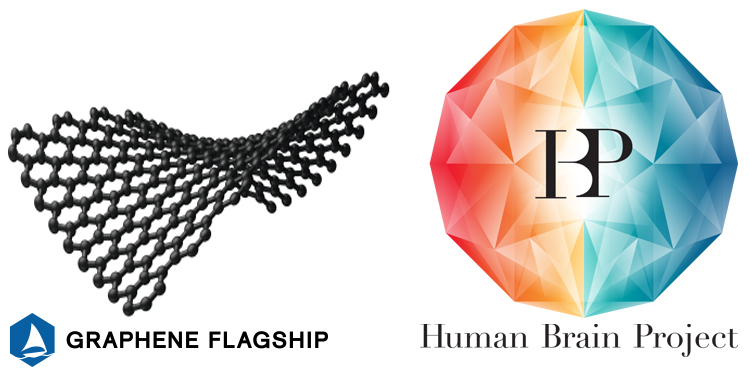
Sabancı University is the only Turkish partner of two of the world’s most ambitious research projects designed to achieve breakthrough innovations in modern science. European Future Emerging Technologies (FET) Flagships Human Brain Project (HBP) and Graphene Project, with estimated budgets of 1.2 billion Euros each, have been officially launched.
The Human Brain and Graphene Projects were chosen by the European Commission as Future Emerging Technologies (FET) Flagship Projects this January within the scope of the EU 7th Framework Program ICT (Information and Communication Technologies). The projects were officially launched in Switzerland and Sweden, respectively, with a meeting of project partners between October 7 and 11, 2013.
The European Commission will contribute 54 million Euros to the ramp-up phase of the projects between October 1, 2013 and March 31, 2016. The projects will enter their second phases on April 1, 2016.
The Turkish leg of the projects will be implemented at the Sabancı University Nanotechnology Research and Application Center (SUNUM).
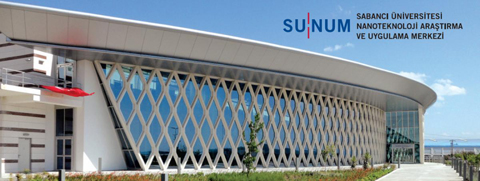
Human Brain Project – HBP
With more than 130 research institutions from Europe and around the world on board and hundreds of scientists in a myriad of fields participating, the Human Brain Project is the most ambitious neuroscience project ever launched. Its goal is to develop methods that will enable a deep understanding of how the human brain operates. The knowledge gained will be a key element in developing new medical and information technologies. On Monday, October 7, 2013, the project partners met at EPFL (Ecole polytechnique fédérale de Lausanne), the coordinating institution. Over the course of a week, neuroscientists, doctors, computer scientists and roboticists will fine-tune the project’s details. Six months after its selection by the EU as one of its FET Flagships, this project of unprecedented complexity, with an estimated budget of €1.2 billion, has now been set in motion.
Six platforms to move the project forward
The Human Brain Project’s initial mission is to launch its six research platforms, each composed of technological tools and methods that ensure that the project’s objectives will be met. These platforms are: neuroinformatics, brain simulation, high-performance computing, medical informatics, neuromorphic computing and neurorobotics.
Over the next 30 months scientists will set up and test the platforms. Then, starting in 2016, the platforms will be ready to use by Human Brain Project scientists as well as researchers from around the world. These resources – simulations, high-performance computing, neuromorphic hardware, databases – will be available on a competitive basis, in a manner similar to that of other major research infrastructures, such as the large telescopes used in astronomy.
Neuroscience, medicine and technology: the Human Brain project’s goals
In the field of neuroscience, the researchers will have to manage an enormous amount of data – in particular the data that are published in thousands of scientific articles every year. The mission of the neuroinformatics platform will be to extract the maximum amount of information possible from these sources and integrate it into a cartography that encompasses all the brain’s organizational levels, from the individual cell all the way up to the entire brain. This information will be used to develop the brain simulation platform. The high-performance computing platform must ultimately be capable of deploying the necessary computational power to bring these ambitious developments about.
Medical doctors associated with the project are charged with developing the best possible methods for diagnosing neurological disease. Being able to detect and identify pathologies very rapidly will allow patients to benefit from personalized treatment before potentially irreversible neurological damage occurs. This is the mission of the medical informatics platform, which will initially concentrate on compiling and analyzing anonymized clinical data from hundreds of patients in collaboration with hospitals and pharmaceutical companies.
Finally, the Human Brain Project includes an important component whose objective is to create neuro-inspired technologies. Microchips are being developed that imitate how networks of neurons function – the idea being to take advantage of the extraordinary learning ability and resiliency of neuronal circuits in a variety of specific applications. This is the mission of the neuromorphic computing platform. The neurorobotics platform will focus on integrating neural network simulations into robots (initially virtual ones), who will benefit from new aptitudes such as learning ability or resiliency.
Next milestone: 2016
The platforms will be set up as part of a global, coherent project. For example, the scientists will depend on the brain simulation not only to better understand the mechanisms of neurological disease and identify new therapeutic targets, but also to update functional principles or even accelerate the development of neuro-inspired technologies. At the same time, these same technologies could contribute to meeting the simulation’s computational requirements. The success of the Human Brain Project depends in large part on the dynamics of exchange that will occur between its six platforms.
The scientists involved in the Human Brain Project now have two and a half years to finalize the research platforms. Once these are established, researchers will have at their disposal the infrastructures, tools and methods they need in order to meet their objectives. Now, nine months after its selection as a EU Flagship, the project is officially on its way.
Sabancı University is the Turkish implementer of the Human Brain Project

Prof. Yaşar Gürbüz ve Dr. Volkan Özgüz
A team of technical experts led by Sabancı University faculty Dr. Volkan Özgüz and Professor Yaşar Gürbüz will develop neurosimulational computation architectures, ultra-low voltage compute circuits and hardware platforms to enable researchers to develop new informatics systems based on the architecture and circuitry of the human brain.
With this project, Sabancı University will create a platform in Turkey to understand the human brain and provide direction to medical and informatics research, mediating collaboration between new participants and European partners of the project, and bring international recognition to Turkey. The projects will enable Turkish researchers to become involved in leading- edge research that will shape the 21st century, and give them the opportunity to work alongside Nobel laureates that are members of institutional project partners.
Graphene Project
The Graphene Flagship – one of Europe’s first ten-year, 1 billion Euro flagships in Future and Emerging Technologies – was launched during a ceremony in Gothenburg on Friday, October 11, 2013.
Graphene Flagship was selected as one of Europe’s first technology flagships by the European Commission in January 2013. The mission is to take graphene and related layered materials from academic laboratories to society, revolutionize multiple industries and create economic growth and new jobs in Europe.
Graphene has been a subject to a scientific explosion since the groundbreaking experiments on the novel material less than ten years ago, recognized by the Nobel Prize in Physics in 2010 to Professor Andre Geim and
Professor Konstantin Novoselov, at The University of Manchester. Graphene’s unique combination of superior
properties makes it a credible starting point for new disruptive technologies in a wide range of fields.
The Graphene Flagship consortium is composed of 75 academy and industry partners from 17 European countries.
Unexpected science in a pencil line: the revolutionary material that is Graphene
Graphene, a single layer of carbon atoms, may be the most amazing and versatile substance available to mankind. It poses a unique set of properties, each of which seems to be superior to its rivals. This material is the first 2D atomic crystal ever known to us; the thinnest object ever obtained; the world’s strongest material (stronger than diamond, yet lightweight and flexible); its charge carriers are massless; it is extremely electrically and thermally conductive; very elastic; and impermeable to any molecules.
It is expected that the applications of graphene for life science and health care can potentially overshadow even those in electronics. Graphene has a number of properties which make it potentially promising for bioapplications.
Its large surface area, chemical purity and the possibility of easy functionalization provide opportunities for drug
delivery. Its unique mechanical properties suggest tissue engineering applications and regenerative medicine.
Its combination of ultimate thinness, conductivity and strength make it an ideal support for imaging biomolecules in transmission electron microscopy. Also, chemically functionalized graphene might lead to fast and ultrasensitive measurement devices, capable of detecting a range of biological molecules including glucose, cholesterol, hemoglobin and DNA.
This miraculous material, together with the Graphene Flagship, is expected to take graphene and related layered materials from academic laboratories to society, and revolutionize multiple industries.
Sabancı University to implement the Graphene Flagship in Turkey
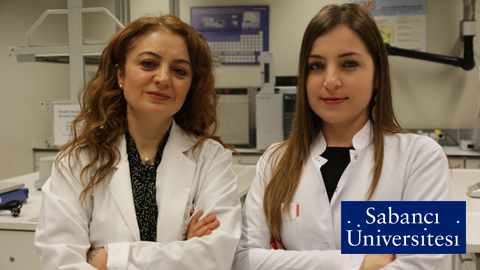
Doç. Dr. Selmiye Alkan Gürsel ve Dr. Burcu Saner Okan
A team that includes Sabancı University faculty Associate Professor Selmiye Alkan Gürsel as implementer and Dr. Burcu Saner Okan as specialist will be a part of the energy applications job pack of Graphene. Taking advantage of availability of various forms of graphene within the Flagship, the objective of the “Energy” group is to assess their interest in various daily life energy applications. By focusing on specific functions involved in applications including photovoltaics, energy storage, fuel cells and hydrogen storage, the Energy group intends to connect the fundamental and technological graphene expertise to the designers and developers of energy conversion and storage devices and explores novel research routes for future graphene-based material which could better match the energy application needs.
The Sabancı University team will focus on the use of graphene in fuel cells. Sabancı University is the only consortium member on fuel cell applications of graphene in the first phase. The outcomes of the project will contribute greatly to the scientific and technological development of Turkey in this area. The project will augment Sabancı University’s present efforts in graphene research, create a center of competence and help to create new partnerships. Sabancı University will also mediate between graphene research consortia in Turkey and the European partners of the project, enabling Turkey to have international presence in graphene studies.
Among the promising industrial applications of graphene are low-latency electronic and optical equipment, functional light components and advanced batteries. Some new products that may be possible through graphene technologies include flexible and robust consumer electronics such electronic paper and bendable personal communication devices, and high-efficiency aircraft. In the long run, graphene is expected to pave the way for new computing paradigms and breakthrough medical applications like artificial retinas.

